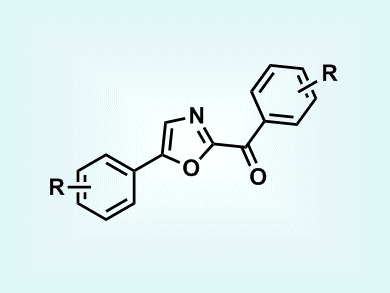The introduction of an acyl group at the C2 position of azoles is challenging and therefore 2-aryloxazoles are rarely synthesized. Only a few methods have been reported for the synthesis of 2-acyloxazoles and most of these involve the use of a metal catalyst.
An-Xin Wu and co-workers, Central China Normal University, Wuhan, sought a way to introduce a substituent at the problem C2 position of oxazoles and at the same time replace more traditional metal-catalyzed approaches. They discovered that 2-acyloxazoles can be obtained from a number of reactions that begin with a number of different starting materials, just by changing the iodine-based oxidant. The domino reaction of aryl methylketones with ammonium acetate and iodine gives 2-acyloxazoles. The team discovered that by using iodine instead of 2-iodoxybenzoic acid (IBX) the reaction of arylethenes with ammonium acetate gives the same 2-acyloxazole products, and the same is true for arylalkynes when N-iodosuccinimide is used.
A mechanistic investigation showed that the same key unstable α-keto aldehyde intermediate is produced in each reaction regardless of the starting material used. This method might be able to introduce more flexibility into synthetic pathways. Further applications of this technique are currently being studied.
- Formation of 2-Acyloxazoles by a Multipathway Coupled Domino Strategy: One-Pot Metal-Free Oxidative Cyclization Applicable to Various Substrates,
Wei-Jian Xue, Wei Zhang, Kai-Lu Zheng, Yun Dai, Ya-Qiong Guo, Hong-Zheng Li, Fang-Fang Gao, An-Xin Wu,
Asian J. Org. Chem. 2013.
DOI: 10.1002/ajoc.201300124




